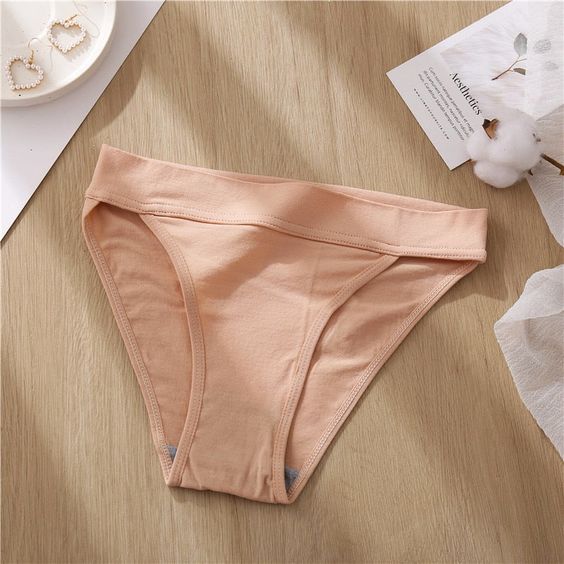
Know it, Design it, Perfect it!
Anatomy of a Panty: Terminology Every Designer Needs to Know
Panty terminology is an essential knowledge base for any designer looking to create the perfect intimate apparel piece. Whether you’re designing panties, briefs, boyshorts, thongs, or any other underwear style, understanding terms like rise, side seam, gusset, and more can help you to create a garment that fits and looks great on any body type. With that in mind, let’s explore the panty terminology every designer needs to know.
Rises:
Rises refer to the vertical measurement from the centre crotch seam to the top of the waistband. Depending on the type of panty, the rises can range anywhere from low (around 6-7 inches), mid (8-9.5 inches) to high (10-13 inches). A low rise panty will generally sit below the navel whereas a high rise sits above the navel, providing more coverage and support. Low-rise panties usually have narrower side seams and may have a lower cut leg opening as well. High-rise panties typically have wider side seams and may have higher leg openings for better coverage and support.
The rise will determine if a panty style is high-waisted, mid-waisted, or low-waisted depending on what look you are aiming for. High-waisted panties often cover navel area and provide maximum coverage, while low-waisted panties sit lower on hips and provide minimal coverage. Mid-waisted panties are a good option for those who want moderate coverage with a comfortable fit. In addition to waist height, panties can also be designed with a narrow or wide cut hip opening.
Side Seams:
A side seam is a sewing line along the sides of the body of the panty that helps give it shape and structure. The most common type of side seam is an overlapping side seam. This type of seam starts at the waistline, follows the curve of the hip, and then crosses over itself on the lower leg before ending at the leg opening.
A split side seam is another type of side seam that starts at the waistline, splits apart at the hips, and then comes back together again at the leg opening. A French side seam is a less common type of side seam. This type of seam starts at the waistline and curves around the hips, but instead of crossing over itself like the overlapping seam, this type of seam ends at the bottom of the hip rather than continuing down to the leg opening.
Gusset:
Gusset lining is an important feature in panties, providing added protection and hygiene for its wearer. This lining extends from the crotch area to the edges of the panty and helps to absorb any moisture that might be present. Gusset lining also helps keep bacteria at bay by providing a barrier between skin and fabric, reducing the possibility of irritation or infection. The use of gusset lining helps make panties more hygienic, comfortable, and safe for its owner. Typically the gusset lining is made from 100% cotton jersey fabric or bamboo.
Front Coverage:
The front coverage of a panty usually ranges from brief to full coverage. Brief coverage offers less coverage and more of a revealing look while full coverage provides more modesty. Different core shapes of panties such as thongs, G-strings, bikinis, tangas, and briefs all have different levels of front coverage. Designers should be aware of the differences in front coverage when creating a particular panty.
Back Coverage:
Back coverage refers to the amount of fabric that covers the rear area. It can range from a full-coverage “granny panties” style, cheeky, to a thong or tanga, with minimal coverage. Low-rise panties offer less coverage at the back than high-rise options, which tend to be fuller. A cheeky panty is a type of panty that provides less coverage for the bum, giving it a ‘cheeky’ look. These panties are often quite flattering due to their cut and design.
Crotch:
The crotch of a pair of panties is the area that sits below the waistband and covers the crotch region. This area is important when it comes to design, as it must provide enough coverage to make the wearer feel comfortable while still looking aesthetically pleasing. A gusset lining goes on the inner part of the crotch panel.
Waist Band:
It serves as the foundation of the garment, providing it with structure and shape while also helping to keep everything in place. The type of waist band used will depend on the style and design of the panty, but typically they are made from elastic, which gives them the necessary stretch and flexibility. The elastic can be a visible thick waistband elastic, or a lightweight elastic underside the garment, making it not visible or part of the design. Some panties also may have a bonded bemis tape waistband for a seamless look.
Leg Openings:
The type of leg opening used in a panty design will determine how much coverage and support is provided for the wearer. Leg openings come in a variety of shapes, sizes, and cuts, including high cut legs, low cut legs, and string/seamless leg openings.
Designers of intimate apparel need to be well-versed in the panty terminology associated with panties, as the specific details and features of different styles can significantly affect the wearer’s experience. Knowing the rises, side seams, gussets, front coverage, crutch, back coverage, waist band, leg openings, and hip designs will give designers a comprehensive understanding of the garment they are designing.
When creating an intimate apparel design, it is important to remember to take into account the customer’s preferences and body type. Additionally, understanding panty terminology will enable designers to more accurately communicate their ideas to their teams, suppliers, and customers. The more knowledgeable a designer is about the various details of panties, the better they can design garments that flatter customers and meet their needs.
